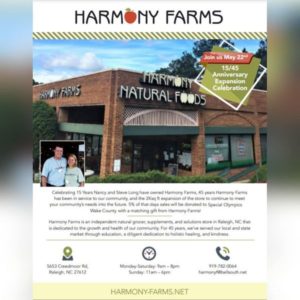
There are other land co-operatives, and co-operative housing, for example, that have been around for a while. The ELC is the only organisation that is doing what it’s doing in a rural context. That had its challenges as well as its benefits.

I think some of the things that are made possible by working in this co-operative format we had, were more of a shared process of decision-making, and I really appreciated the way in which everybody showed up for and was engaged in everything. It really opened my eyes to learn how we were all paid the same amount, and that we all had the same financial economic value placed on the work we were doing.

Working with the ELC was my first experience of working with a co-op and I found it absolutely mind-blowing. How was your experience working with the ELC? The ELC were able to hire me to do a piece of work that was a little bit outside of what they do operationally, but it’s more strategic, more feeding into the wider movement. I came across the ELC, through that desire to get into farming myself. There are problems like access to land, in terms of the financial barrier that exists, but also the structures around planning and land legislation are incredibly complex. I also didn’t necessarily have the kind of knowledge or support that I would need in order to understand how that works. I wasn’t going to be able to afford to just outright buy any land. I moved back to the UK a couple of years ago, having been living in the US and Sweden, and I had a thirst and a desire to get more engaged with farming and food growing.Īnd I really couldn’t see the mechanisms for how I might be able to do that. The Jumping Fences project aims to provide an evidence base for the ELC and other organisations to build their strategy from, and act to address barriers to farming for BPOC in Britain. The co-op sells or rents smallholdings at affordable rates to new entrants to ecological farming and monitors the holdings’ performance against its detailed ecological management plan. Also supported by Land In Our Names and Landworkers’ Alliance, the research identifies the presence of Black and People of Colour (BPOC) farming in Britain and presents their experiences.ĮLC purchases agricultural land and subdivides it into ecologically managed residential smallholdings. By 1966, the one-room country school had become a thing of the past.Naomi Terry is a researcher whose most recent project involved working for the Ecological Land Cooperative (ELC) on a project called Jumping Fences. School districts consolidated, pooling their resources to provide more teachers, broader curriculum, and opportunity for extracurricular activities. Equipped with little more than a blackboard and a few textbooks, teachers passed on to their pupils cultural values along with a sound knowledge of the three Rs.īy the turn of the century, the population began to shift to the cities and country schools began to lose students and tax support. She had to be a nurse, janitor, musician, philosopher, peacemaker, wrangler, fire stoker, baseball player, professor, and poet for less than $50 a month. The school teacher, sometimes slightly older than her pupils, was a renaissance individual.
#First harmony farms how to#
When they arrived on their first day of school they may have only known how to speak a foreign language but they soon learned how to speak, read, spell, and write English. They got to school on foot, on horseback, or in a wagon.

The children who attended ranged in age from five to 21 and endured dust storms, prairie fires, and cattle drives swirling past the school house in order to get an eighth grade education.

They were called names like Prairie Flower, Buzzard Roost, and Good Intent. For a hundred years, white frame or native stone one-room schoolhouses dotted the section corners across Kansas.


 0 kommentar(er)
0 kommentar(er)
